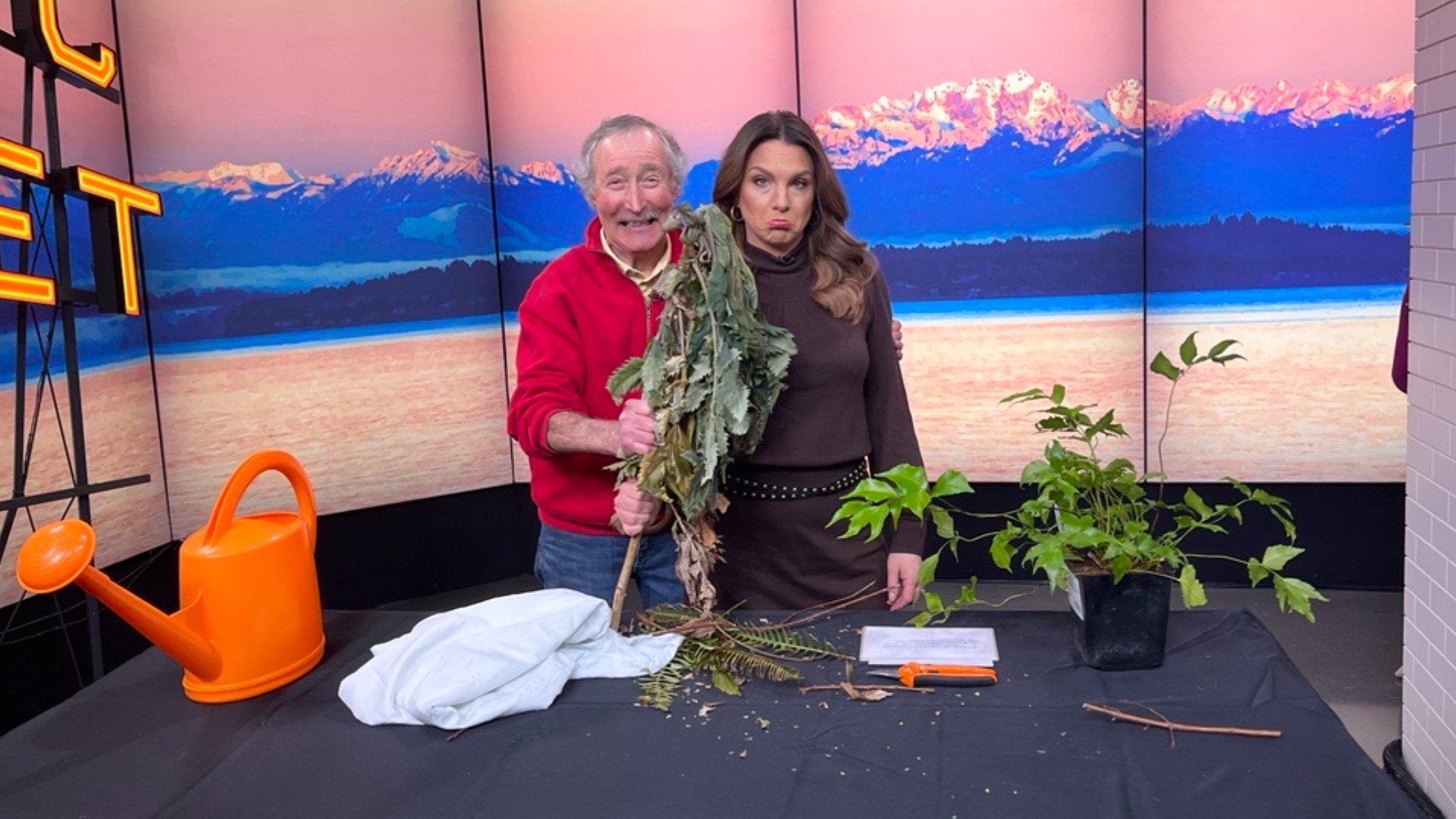SEATTLE — According to Master Gardener Ciscoe Morris:
Protecting plants, before, during and after a hard freeze.
Most plants are hardy enough to survive even a hard freeze like the one we are going through. However there are other plants that are barely hardy and are unlikely to survive temperatures this cold. If a cold snap is forecast, there are some things you could have done before the freeze hit that might have saved some of your more tender plants. Even if it's too late now, hopefully this information will help next time a hard freeze is forecast.
The first thing to do is mulch around your plants to keep the roots from freezing. You can use woodchips, compost, leaves or most any bagged mulching product. Make sure to cover the entire root zone at least a couple of inches thick. One thing I often use is evergreen fern fronds at least 6 inches thick. They are great insulators and repel excess water. You can also use small branches from conifers piled thickly over the root zone.
Before the freeze hits, dig out tender plants, pot them up and move them into an unheated garage. Potted plants are especially susceptible to freeze. Plants in large pots are much less likely to be done in by cold than plants in smaller pots. Move them to an unheated garage and bring them back out as soon as temperatures moderate. If the freeze isn't too bad, moving plants under cover or against a wall might help save them. The wall picks up what ever ambient heat there is even during the coldest days and releases the heat at night. Put plants together and cover them with a sheet. Remove the sheet as soon as conditions moderate.
If the plant is too big to dig, or you don't have anywhere to put them, you might be able to save the plant by covering it. Use frost cloth, burlap, drop cloths, sheets, or blankets to cover plants. Do not use plastic. Cover the plant completely, allowing the cover to drape down to the soil all around the plant. This traps the warmth inside. Put stakes under the cover to prevent heavy snow from crushing the plant. Remove the cover as soon as temperatures moderate. Once the plant has been froozen by the cold, it probably won't do any good to cover the plant unless temperatures get above freezing during the day. Then it still might help to cover it. Take all covers off anytime temperatures get above freezing, but put them back on if a hard freeze is forecast for the night.
After the hard freeze is over, the best thing you can do for your plant is to make sure it has adequate water. Plants can't pick up water in freezing weather and maybe in danger of drying out. When temperatures warm up above freezing, if it doesn't rain, use a watering can and give the plant a good amount of water, making sure to drench the entire root zone. You don't want the plant to be sitting in a puddle, but you want to be sure the entire root zone is moist.
Finally, hold off pruning until spring. Many plants that lose their leaves will leaf back out when it warms up. If you don't see any life in the above branches, don't be in too big a hurry to give up on your plant. Often the root system survives and the plant will grow back from the roots. I've had some plants take until June to reappear. The biggest problem with this is that it's hard to wait for new growth to appear when the nurseries are stocked with exciting new plants that would look great in that open spot in the garden.
My final advice is if a plant doesn't grow back by June, it's 'TIME TO GO SHOPPING'
Segment Producer Suzie Wiley. Watch New Day Northwest at 11 a.m. weekdays on KING 5 and streaming live on KING5.com. Contact New Day.

